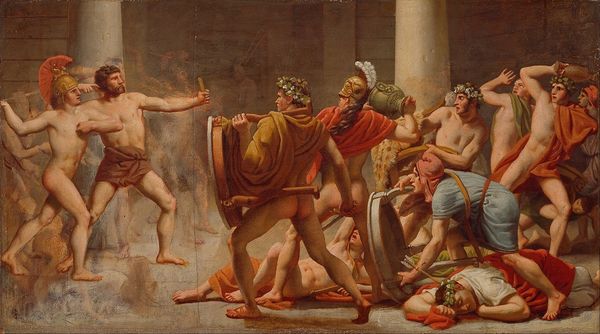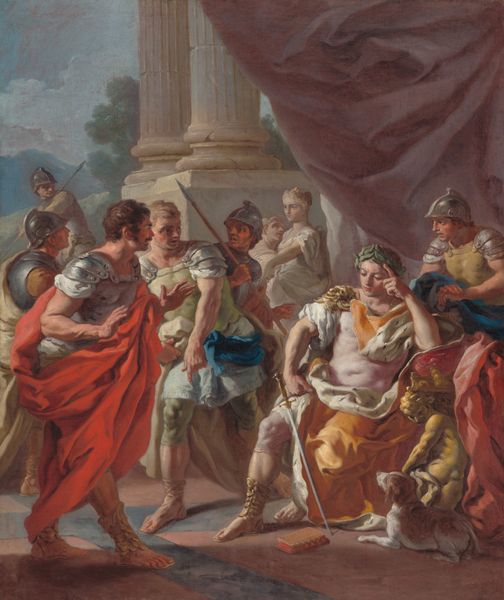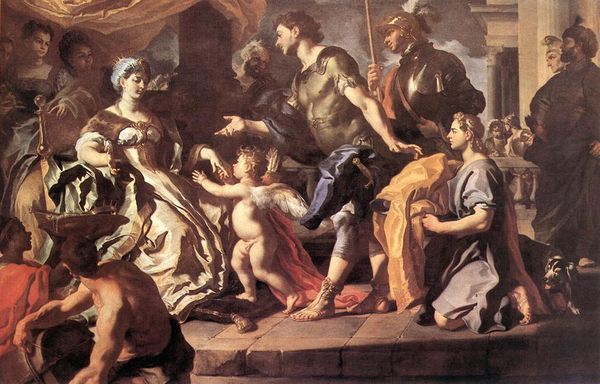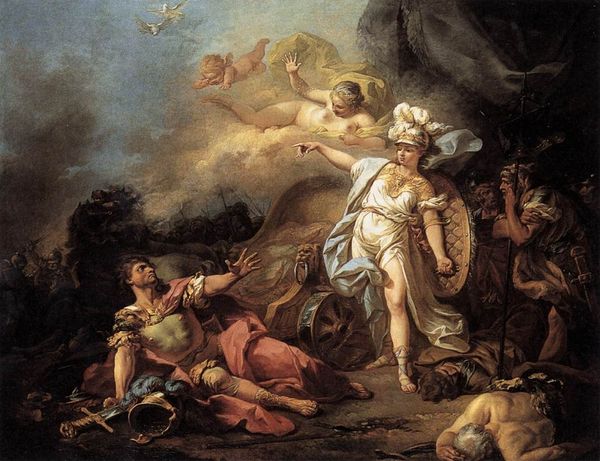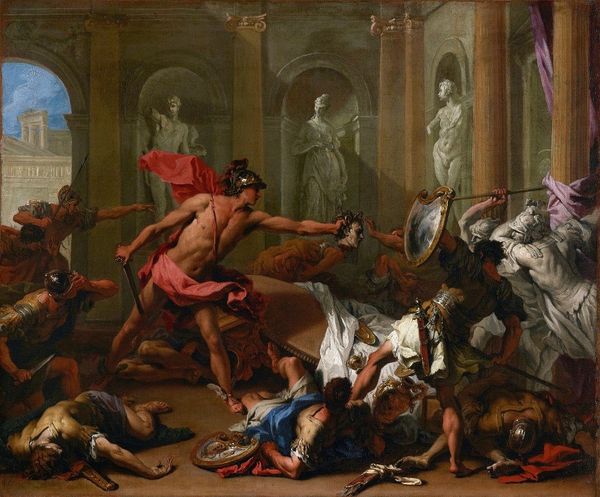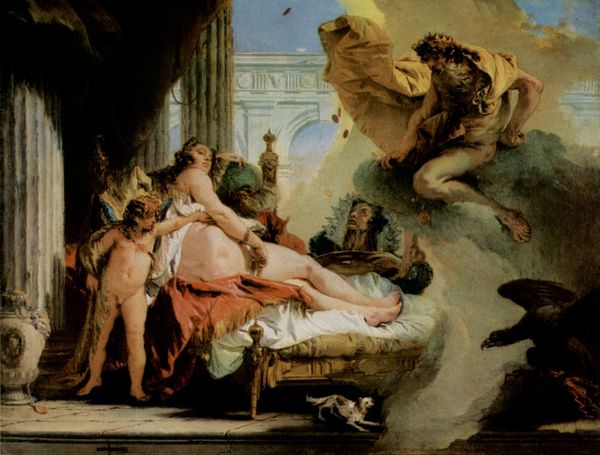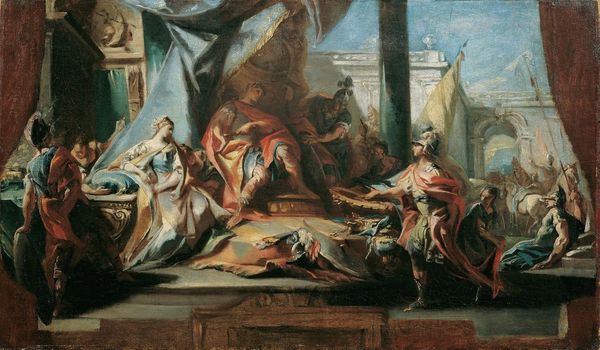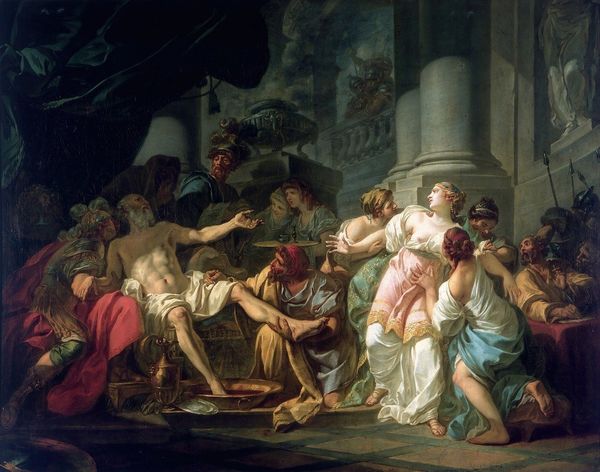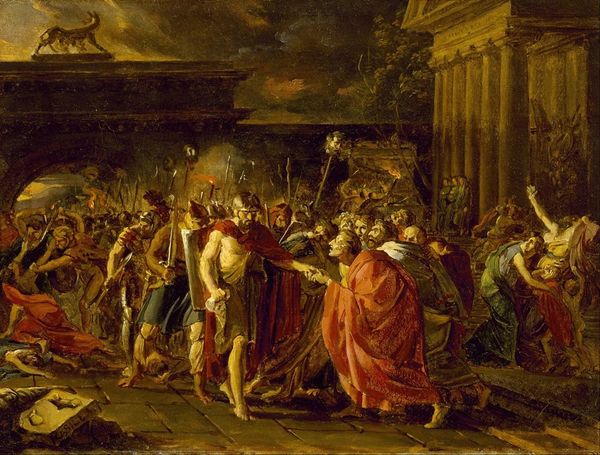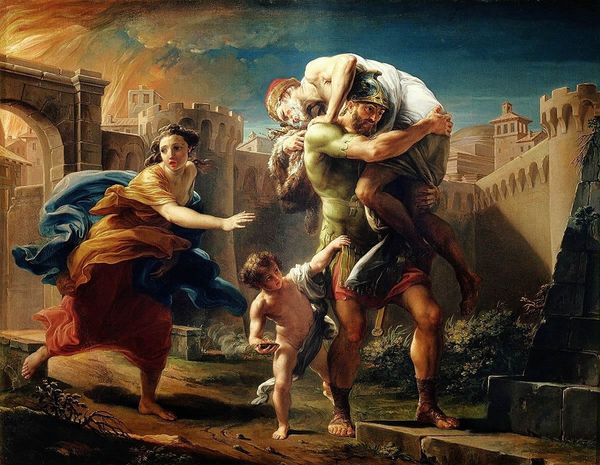
oil-paint
#
venetian-painting
#
allegory
#
narrative-art
#
baroque
#
fantasy art
#
oil-paint
#
figuration
#
oil painting
#
mythology
#
genre-painting
#
history-painting
Copyright: Public domain
Curator: Let’s turn our attention to "Saint Eustace," an oil painting created in 1722 by the Venetian artist, Giambattista Pittoni. Editor: My initial reaction is one of chaotic energy! There's so much movement within the frame, heightened by a rather dynamic, almost theatrical use of light. What a scene! Curator: Indeed. Pittoni’s baroque style truly comes to life in this history painting, a style recognized by its drama and rich coloration. The eye struggles to find a true focal point. Compositionally, what do you make of this tension? Editor: This fragmentation feels deliberate, perhaps reflecting a societal unrest during Pittoni’s time. The rigid structures of the church, state and family being disrupted. Eustace appears to be caught in a clash between devotion and brutality. Curator: From a purely formal perspective, note how Pittoni's brushstrokes dance across the canvas, especially in the draping fabrics. It seems less concerned with smooth, meticulous rendering and instead prizes expressive, almost frenzied marks. Observe too the clever interplay of gold accents which create pockets of luminance that direct our attention throughout. Editor: I am interested by the slain animal, laying in the lower left foreground. Consider the power dynamics—here lies the animal as trophy. What does it signify? In early modern Europe, depictions of animals took on anthropomorphic qualities that mirror colonial encounters. It’s complex. Curator: True, that could well form part of the intended narrative. Consider this against the central figure's dramatic gestures and the rather compressed space—Pittoni masterfully constructs this world within the frame, allowing the viewer to be both observer and participant. Editor: Thinking about this today, centuries removed, the depiction seems ripe for deconstruction. Consider the historical implications of Venetian painting. Curator: An intriguing insight. Pittoni definitely provides us with many interpretive pathways, regardless of whether you lean towards art for art’s sake, or situating a painting like Saint Eustace in its socio-historical moment. Editor: Absolutely, it’s a complex artwork which opens important dialogue.
Comments
No comments
Be the first to comment and join the conversation on the ultimate creative platform.

